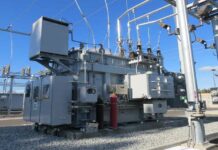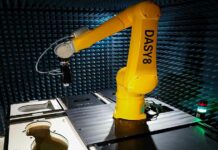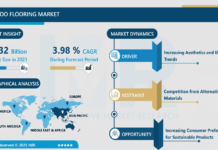An increasing number of advanced technologies is being deployed on construction projects around the globe. As construction projects are diverse and require extensive management, there is no shortage of opportunities to blend in technology to increase safety, quality, speed, and efficiency.
If you’re unsure about technology for your next construction project, here are some ideas to help construction managers boost on-site productivity.
3D Printing Can Produce Custom Components
3D printing allows a contractor to create unique components that suit a project’s needs. This can be done on-site or off-site and reduces material waste. Produce only what you need with minimal labour involved. Entire construction projects, including residential homes, have been built using strictly 3D-printed materials.
IoT Sensors for Data Collection
Automate data collection by implementing sensors on-site. Fast, accurate data can be collected in real time with ease. No data entry errors. No human intervention. As data is recorded in your construction software, it can be collected and analyzed later. The data you can collect ranges from safety compliance to equipment inspections, job progress reports, environmental conditions, structural integrity, and more.
Cloud Storage for Document Management
A construction project generates a lot of documents. Securely store and access these documents and files on cloud platforms like Google Drive, Dropbox, and others. This makes it easy to share paperwork and simplifies editing. There’s no lost paperwork or having to scan documents to send or receive a signature. Digitize everything.
Streamline Monitoring with Construction Management Software
Construction management software offers numerous benefits that make it a must-have for technology at the project’s top levels. Digitizing the process, documents, and approvals involved can streamline project planning.
Define the project schedule and notify relevant team leads of different phases, tasks, and responsibilities. Monitor your budget and cash flow, comparing actual and projected costs to ensure minimal variance.
Enhance communication on a collaborative platform that centralizes all progress updates and reports. Automate project updates and reports, ensuring they are distributed to relevant parties.
BIM Communicates a Project in a 3D Environment
Building Information Modeling, or BIM, represents a facility’s physical and functional characteristics within a 3D model. Use this tech to receive approval from architects, engineers, construction contractors, and clients. Analyze the data as you see it before you—Problem-solve design issues before even beginning a project. Receive a complete picture of a project.
Mobile Apps for Real-Time Reporting
Mobile apps play a central role in communication on a construction site. They allow team leads and management to access project data on the go. They also enable real-time reporting and collaboration with other team members, reducing delays and providing data for quick decision-making. Construction field management software often comes with mobile functionality, making it easy to use anywhere.
Monitor Worker Health and Safety with Wearables
Use devices like smartwatches and movement trackers to detect dangerous conditions and alert workers to take action before a risk becomes an accident. Many safety wearables are available, including those that fit a coat or torso, smart glasses, positioning safety sensors, and wearables that can be implemented into one’s helmet.
Drones Can Identify Job Site Safety Risks
Drones provide an aerial view of a project site. They can track progress in real time and are particularly effective at identifying potential safety risks and job site violations. If such problems can be detected early enough, solutions can be implemented before they progress to injuries, delays, and increased rework costs.
Augmented Reality Provides a Perfect Overlay
AR has many applications in the construction industry, including training, planning, and designing projects. As progress is made, AR can also provide a realistic 3D model that overlays the physical environment. This means one can identify necessary changes, spot quality concerns or safety hazards, and experiment with redesigns.
Virtual Reality for Construction Training Simulations
Virtual reality is used in construction to train workers in a safe, risk-free environment. Without the real-world dangers, workers are put into a simulation where they can develop the knowledge and intuition to make fast, safe decisions. In the same vein, VR can help onboard new workers on a project and introduce job expectations.
AI-Powered Predictive Analysis Is Advancing
Predictive analysis is a powerful tool in construction management software. It can forecast project risks and costs and help construction managers make informed decisions. With AI, one can analyze historical and real-time data to inform more profitable decisions and ultimately reduce inefficiencies on-site.
Autonomous Construction Equipment to Perform Repetitive Tasks
More construction managers are looking to use autonomous equipment and robotics to perform repetitive tasks accurately. Bulldozers, excavators, and loaders can be programmed with predetermined instructions and do not require human intervention to complete their work. Nearly all heavy construction vehicles can be operated in this way.




























